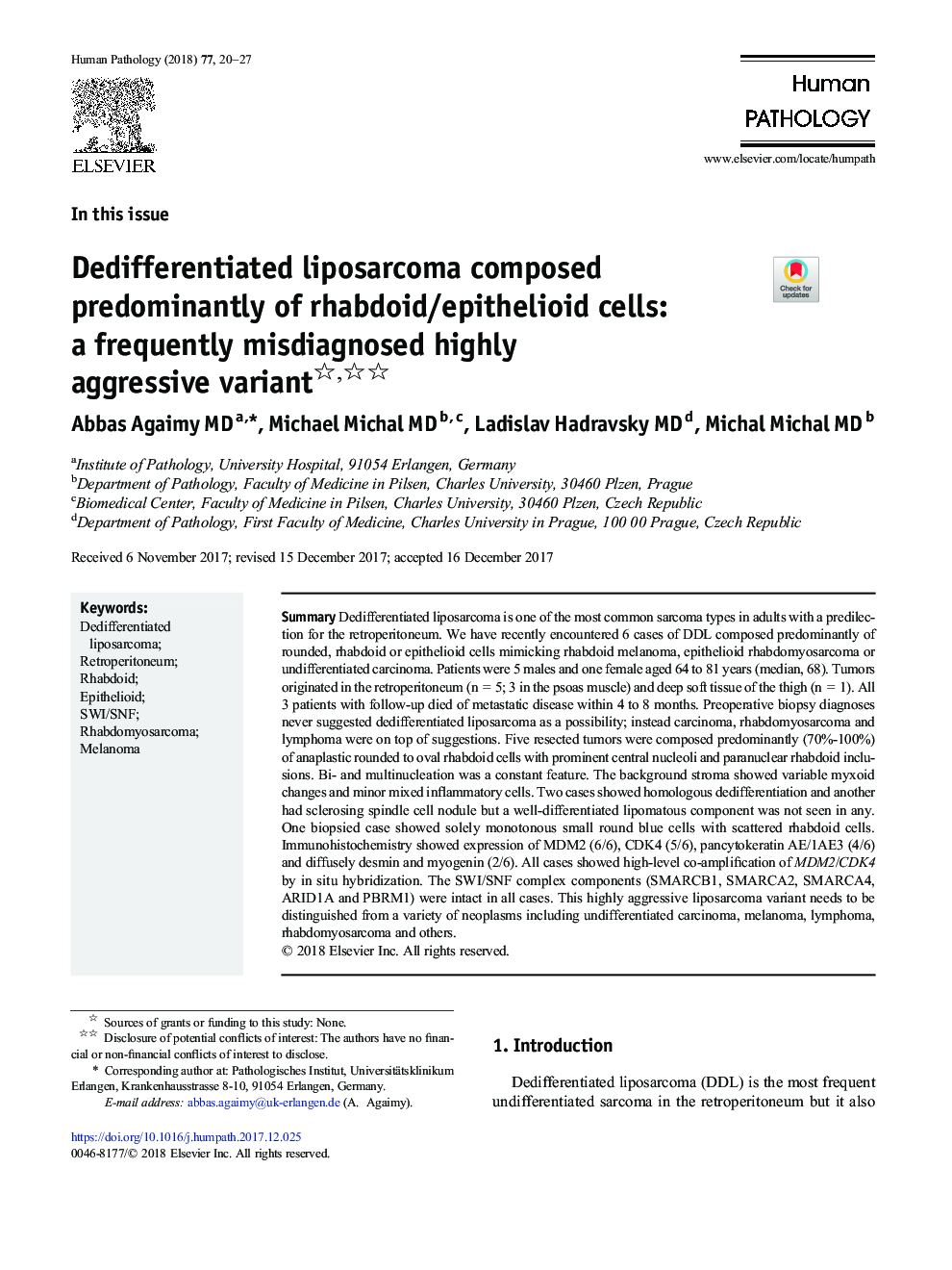| Article ID | Journal | Published Year | Pages | File Type |
|---|---|---|---|---|
| 8807494 | Human Pathology | 2018 | 8 Pages |
Abstract
Dedifferentiated liposarcoma is one of the most common sarcoma types in adults with a predilection for the retroperitoneum. We have recently encountered 6 cases of DDL composed predominantly of rounded, rhabdoid or epithelioid cells mimicking rhabdoid melanoma, epithelioid rhabdomyosarcoma or undifferentiated carcinoma. Patients were 5 males and one female aged 64 to 81 years (median, 68). Tumors originated in the retroperitoneum (n = 5; 3 in the psoas muscle) and deep soft tissue of the thigh (n = 1). All 3 patients with follow-up died of metastatic disease within 4 to 8 months. Preoperative biopsy diagnoses never suggested dedifferentiated liposarcoma as a possibility; instead carcinoma, rhabdomyosarcoma and lymphoma were on top of suggestions. Five resected tumors were composed predominantly (70%-100%) of anaplastic rounded to oval rhabdoid cells with prominent central nucleoli and paranuclear rhabdoid inclusions. Bi- and multinucleation was a constant feature. The background stroma showed variable myxoid changes and minor mixed inflammatory cells. Two cases showed homologous dedifferentiation and another had sclerosing spindle cell nodule but a well-differentiated lipomatous component was not seen in any. One biopsied case showed solely monotonous small round blue cells with scattered rhabdoid cells. Immunohistochemistry showed expression of MDM2 (6/6), CDK4 (5/6), pancytokeratin AE/1AE3 (4/6) and diffusely desmin and myogenin (2/6). All cases showed high-level co-amplification of MDM2/CDK4 by in situ hybridization. The SWI/SNF complex components (SMARCB1, SMARCA2, SMARCA4, ARID1A and PBRM1) were intact in all cases. This highly aggressive liposarcoma variant needs to be distinguished from a variety of neoplasms including undifferentiated carcinoma, melanoma, lymphoma, rhabdomyosarcoma and others.
Keywords
Related Topics
Health Sciences
Medicine and Dentistry
Pathology and Medical Technology
Authors
Abbas MD, Michael MD, Ladislav MD, Michal MD,
